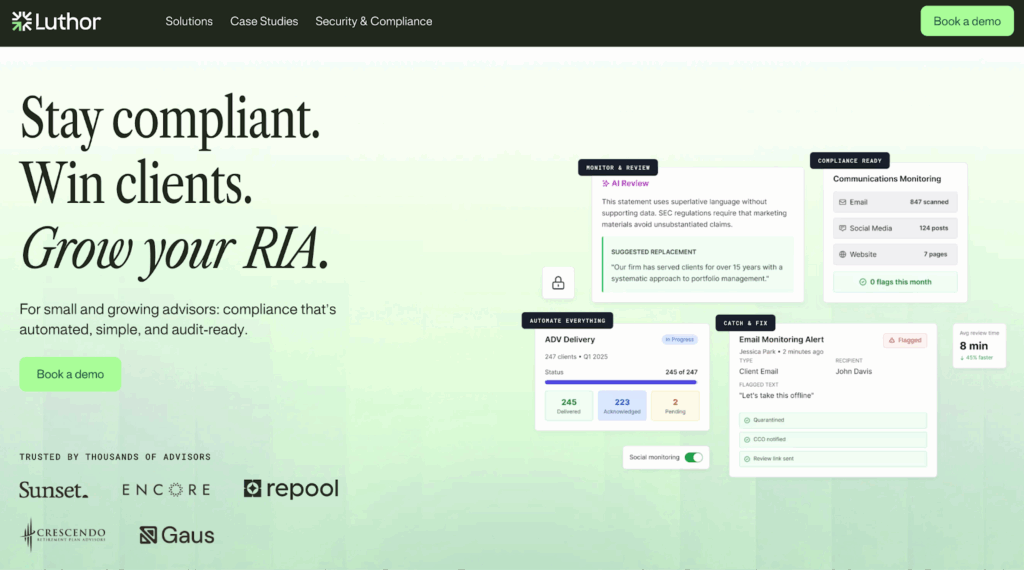
Harnessing the Power of Automated Tools for Regulatory Compliance
As organizations navigate increasingly complex regulations, the ability to quickly adapt and consistently align with evolving standards is crucial.
Leveraging automated tools for regulatory compliance is now fundamental to any strategy that aspires to excel in a constantly shifting risk landscape.
By integrating intelligent automation, compliance teams simplify processes, reduce manual burdens, and create a proactive foundation for robust governance.
The Shift from Manual to Automated Compliance
Manual processes, spreadsheets, and checklists are labor-intensive, error-prone, and unsustainable in today’s digital world.
More efficient solutions are available to standardize evidence collection, consolidate policy management, and allow real-time visibility into compliance efforts.
Possible benefits of smart process automation include improved resource efficiency, reduced risk, and a higher level of compliance with regulations.
This gives a competitive advantage as people are free to think tactically rather than being tied down to ordinary administrative work.
Intelligent Technologies Power Compliance Evolution
Innovation is at the heart of compliance.
With AI and Machine Learning, compliance technology enables organizations to identify regulatory gaps with outstanding speed and ease, through patterns in data and real-time risk detection and predictive analytics.
These technology platforms can review new regulatory requirements, evaluate their implications, and automatically remediate issues before they occur by taking action.
They can help conduct fraud assessments, customer due diligence, and transaction reporting to help businesses comply with regulations.
Data Privacy, Security, and Continuous Monitoring
As a result, to comply with data privacy no longer happens once and is done.
Organizations need automated solutions that allow real-time monitoring of data flows to reduce risks and detect possible sources of violations before a reportable incident occurs.
Compliance technology allows organizations to use strong encryption, secure data storage, and simple data trails to ensure sensitive data is stored safely and easily audited as needed.
Organizations record data subject access requests, third-party risk, and consent across the organization from one or many dashboards, improving efficiency and transparency for all users.
Blockchain and Immutable Records
Blockchain allows for immutability, visibility, real-time, continuous access, and tamper-proof audit trails for compliance footprints, allowing for unprecedented levels of trust and assurance to regulators, stakeholders, and business partners.
Compliance teams can benefit from blockchain-based solutions thanks to easier verification, reporting, and decreased compliance costs.
The Emergence of Predictive and Personalized Compliance
Modern compliance tools are responding to the need for adaptive platforms that can use contextual signals to adjust processes, alerts, and audits for specific business needs.

Predictive analytics is the forward-looking identification of regulatory changes and risks.
This individualized approach minimizes false positives.
It also nurtures a business culture of confidence and a commitment to continuous improvement.
Cloud-Based Systems Enhance Flexibility
Cloud-based technology platforms have led the industry towards an approach that creates globally accessible and scalable tools for global teams to collaborate, share best practices, and keep everyone up to date.
They also support real-time updates of regulations and guidelines, support secure remote working, enable business continuity, and provide flexibility as a business evolves or pivots towards a different direction.
Building a Culture of Proactive Compliance
Technology alone cannot sustain compliance success.
The most successful organizations comply first and create a culture that educates people in and communicates during the process every day.
Management leads cross-functional teams toward continuous improvement and empowers them with resources and authority.
Automated platforms increase transparency, accountability, and provide management and board metrics that support continuous improvement initiatives.
Overcoming Modern Compliance Challenges
Major barriers today include regulatory complexity, data privacy concerns, cybersecurity threats, and the challenge of keeping pace with ongoing changes.
Tackling these requires:
- Implementing automated tools for regulatory compliance to streamline monitoring and reporting
- Embracing real-time oversight and analytics to spot threats or gaps immediately
- Adopting secure platforms that bridge physical and digital compliance environments
- Fostering continuous staff training and awareness to build shared responsibility
The Role of Technology Partners
Companies like Luthor.ai and many others offer services to foster scalability in corporate compliance adventures.
Their offerings include automation, industry-specific controls, and predictive and prescriptive analytics to help discern risk and improve operational efficiency.
By including these partners’ deep industry expertise in frameworks, compliance programs can be much more than box-ticking exercises: they’re more resilient and better prepared for any eventuality.
Charting the Path Forward
The regulatory environment continues its increasing complexity, but how quickly and how far businesses can comply cleverly with it, including with automation, cloud, and advanced analytics, can turn compliance from costing to do business into an important planned asset.
When organizations establish a unified technology strategy, build toward a skills-forward workforce, and engage with trusted partners, they can turn compliance challenges into opportunities to maintain an adaptive, forward-looking posture in an ever-changing environment.


